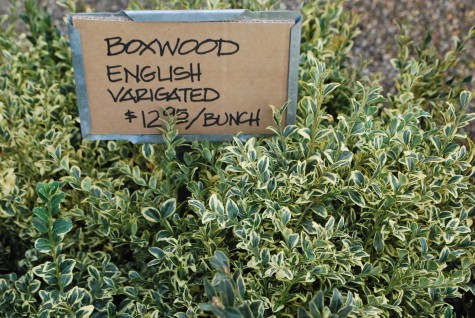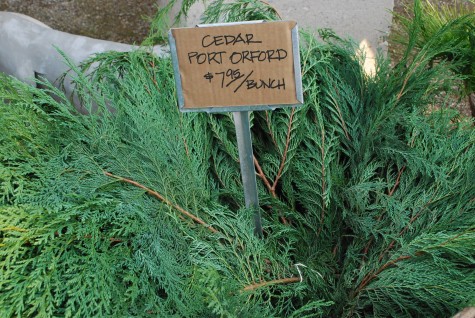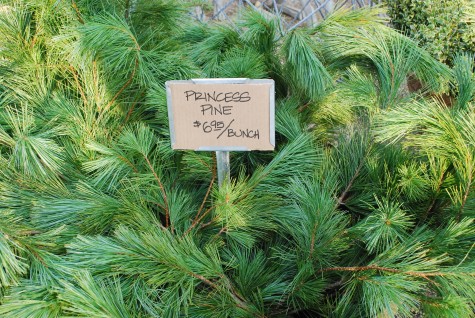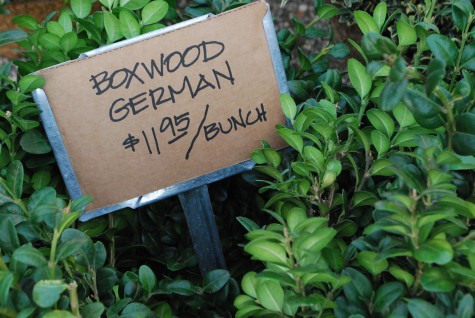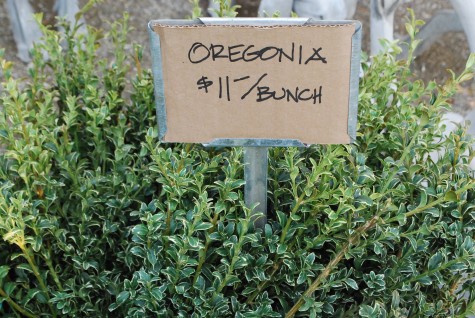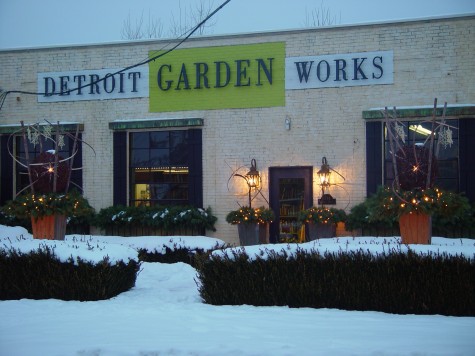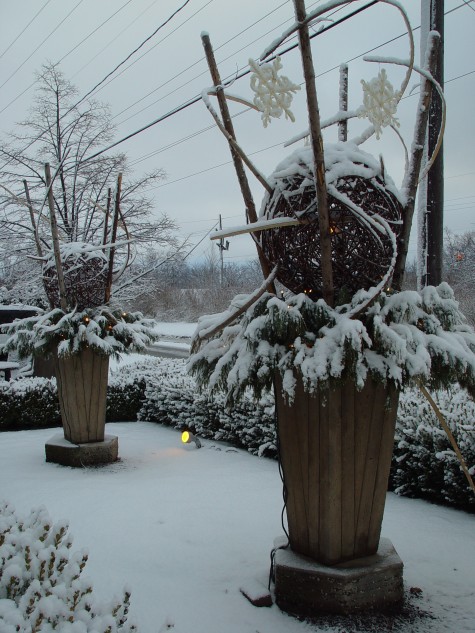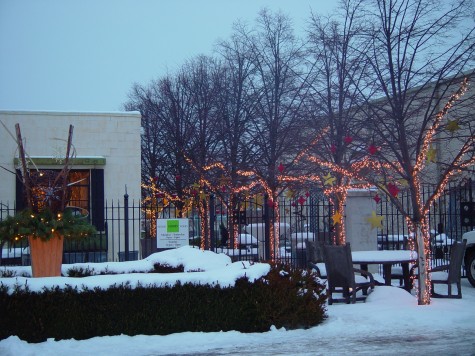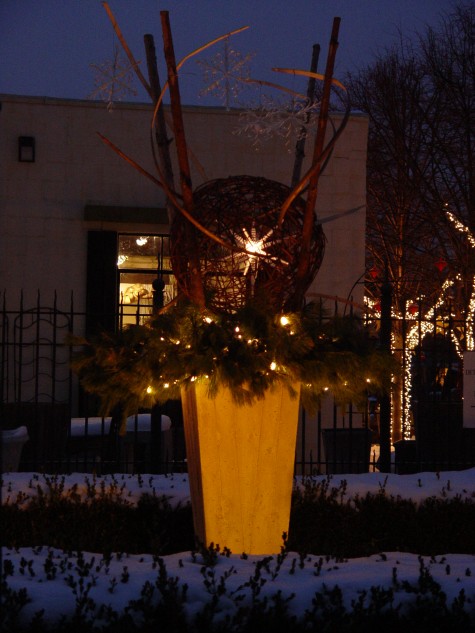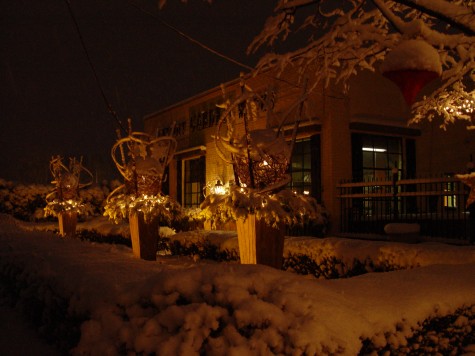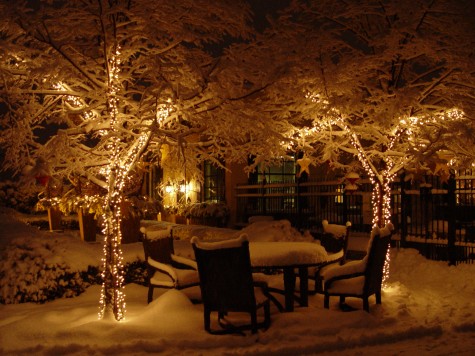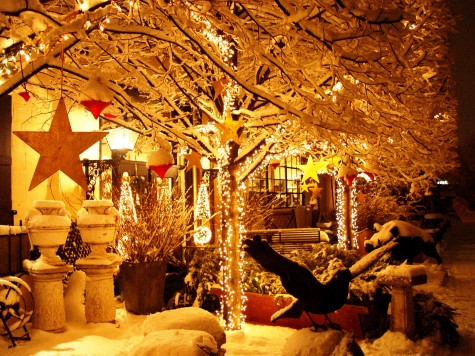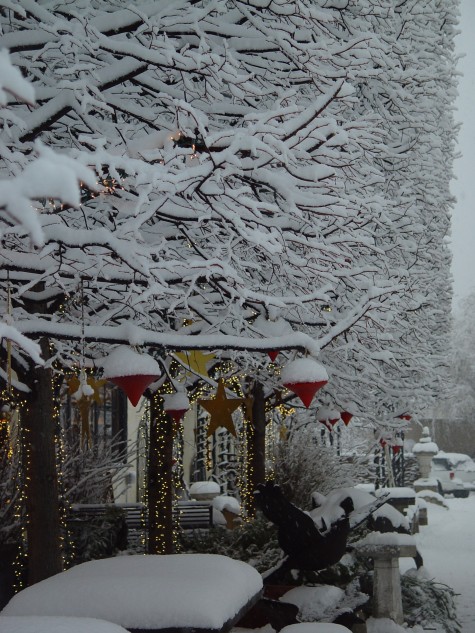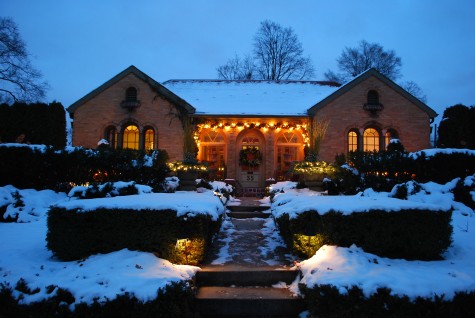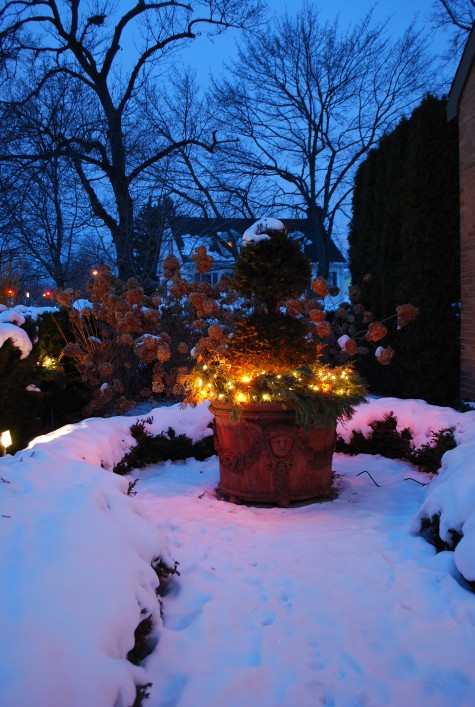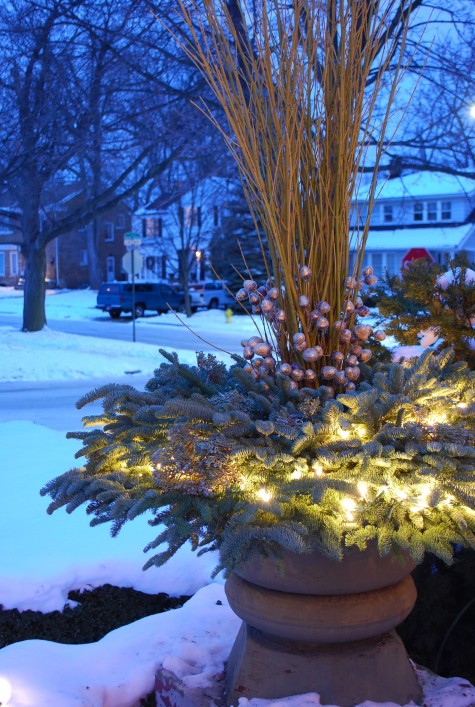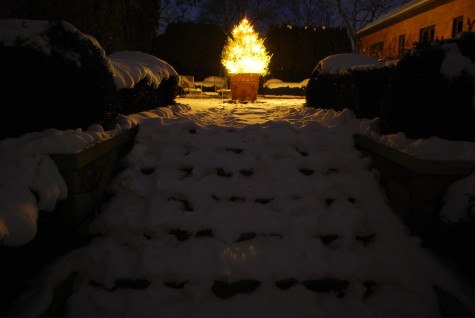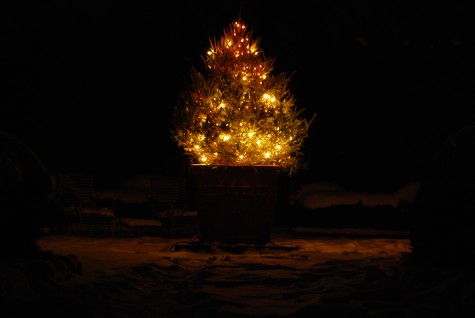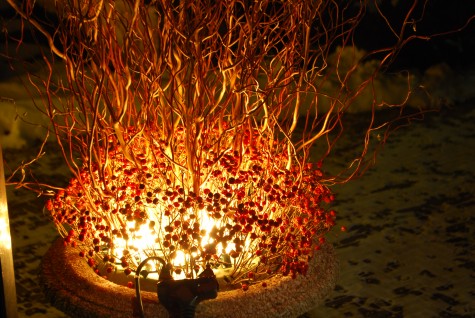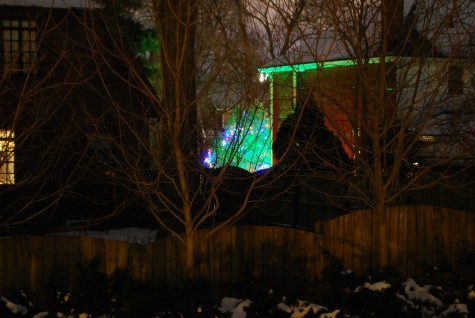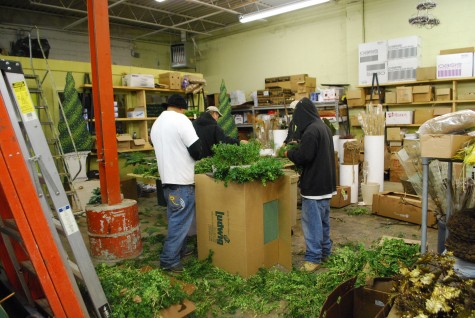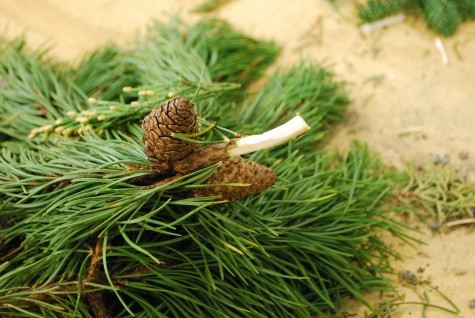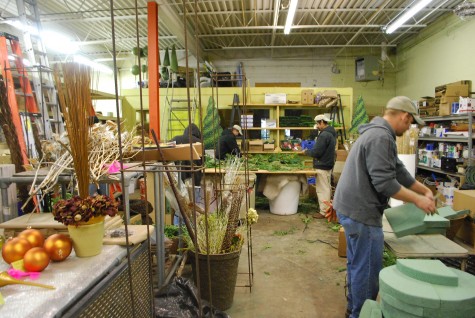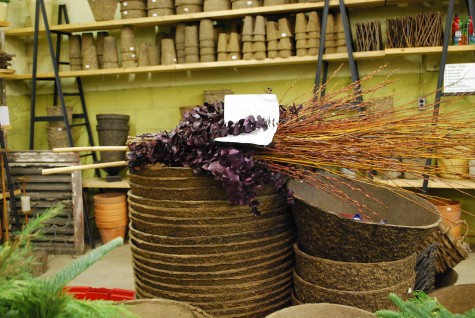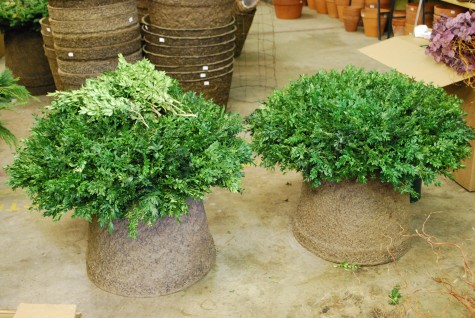So many of the materials used at the holidays are harvested from the landscape. Not my landscape, mind you. My evergreens grow much too slowly to be trimmed for holiday greens; the one spruce on my property was limbed up at least 12 feet before I moved in. But there are places where the boxwood flushes several times a season, and the magnolia grows lushly. Thank heavens for all the fir-Noble, Frazier, Douglas, Balsam, Silver, Concolor-fir boughs are so beautiful, long lasting, and fragrant at the holidays. And of course, the iconic boxwood. Cut magnolia-this a a subject worthy of a post soon to come. We have true variegated English boxwood branches for the first time this season. Would that I could grow this gorgeous evergreen in my garden! That aside, I plan to enjoy all of the cut greens available during the holiday and winter season.
Noble fir-so aptly named. The short needles grow densely along each branch. They shrug off the worst of the winter weather; the cut branches stay green for months. Evergreen needles have evolved to survive long periods when the roots cannot obtain water, when the soil is frozen. The needles have very little in the way of surface area. This means water evaporates at a lower and slower rate than say a maple leaf. A big surface area means rapid evaporation. Their formal shape and gorgeous blue green color makes them a green of choice for winter arrangements. Noble fir-the mainstay of my winter container arrangements.
Berried juniper is not my most favorite green, but the blue berries are very persistent. I like mixing this green with other blue hued greens.
Long needle pine-just exactly what species is this? This is not a common name that I know. Should you recognize this evergreen, will you write me? The long needled pines-as in white pine, have gracefully curving stems. This makes them great for informal arrangements. Curvy is a good look, for the winter.
I love the texture and the fragrance of cedar. This is an evergreen with flat needles. Those flat needles present more surface area to all of those elements that dry out cut greens. I use Port Orford cedar, a lax and luscious variety distantly related to my thujas, outside only. Cedar roping and branches dry out very quickly indoors. Even outdoors, they dry, brown out, and drop needles too soon to make them a cut green of choice. I use cedar as an accent in my holiday decor projects. Long lasting gets lots of votes. That aside, I like any seasonalexpression. Cut cedar for that one moment brings the holidays to mind. Cedar branches-so fragrant, and so fleeting.
Douglas fir is perhaps the least showy of all of the specialty holiday greens, but its longevity is legendary. I have been known to cut up Douglas fir Christmas trees after Christmas for winter pots. Douglas fir will stay green well into April. I am impressed by this. 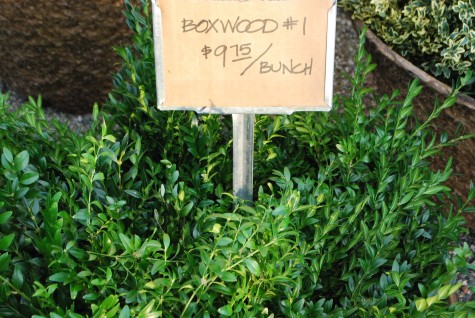
Boxwood is an evergreen so close to my heart-I like them wild, I love them trimmed. Broad leaved evergreens are a great foil to the needled evergreens. This is the perfect cut material for clipped topiaries, and formal wreaths. Any arrangement of needled evergreen boughs gets a visual boost from any boxwood companionship. I like the reference in my holiday decor to the boxwood in my garden.
Princess pine-I have never planted one. I do not know the species. But these branches look great in winter containers and garlands. The long needles are presented in short tufts. Where would this work for you?
German boxwood is a very big leaved boxwood. The very large leaved branches are striking in winter or holiday arrangements.
Oregonia is a name of choice in the florist trade for boxwood-but this boxwood is much more subtle, and smaller leaved than our English variegated boxwood. I will not debate the differences. I can only say that there are so many choices in cut greens for the holidays.
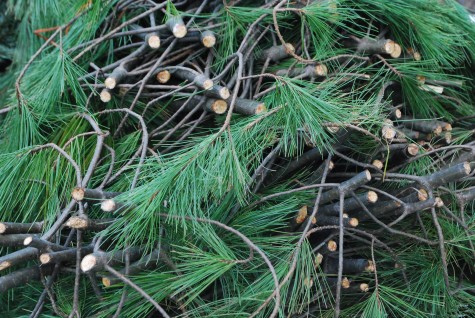
Every bale of greens that came in this week -beautiful. Those fresh materials-they smell great. I hold them in my hands, and imagine. They keep me going. They keep me going strong.
